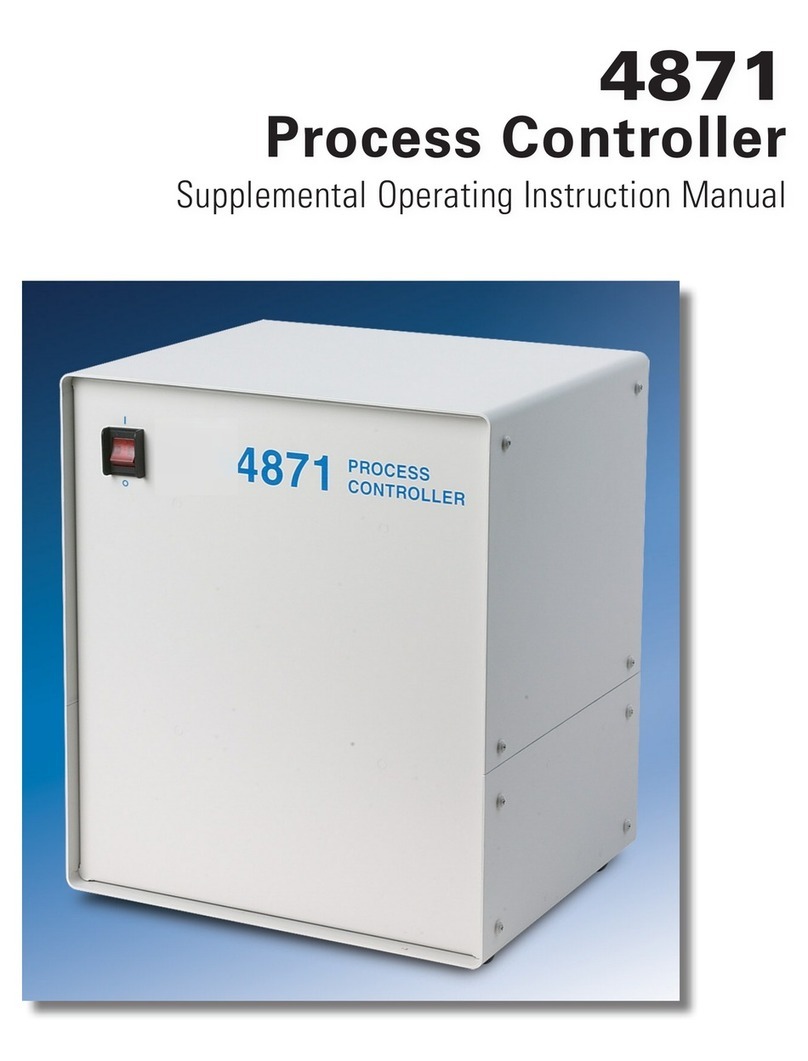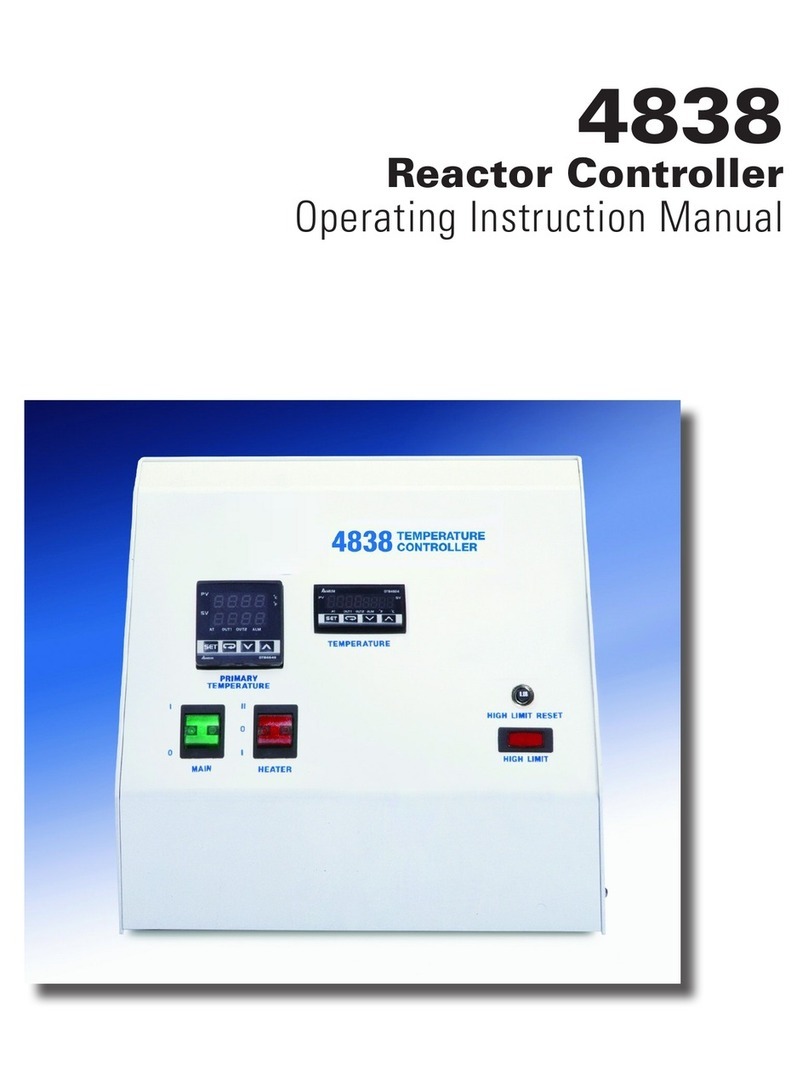
4848T Reactor Controller with Touchscreen
9
Always turn the speed control knob fully counter-
clockwise to the off position before turning on the
motor switch, then advance the knob clockwise
slowly to develop the desired speed. Do not over-
load the motor. Any high speed or high viscosity
load which trips the circuit breaker (90 VDC motors)
is too heavy. Reduce the speed to avoid overload-
ing and use the reset button on the rear panel to
restart the motor.
Adjustments To Speed Control Board
There are five trimpots in the speed control module
that can be used to adjust the performance of the
motor. These are set at the factory for optimum
performance and should not be disturbed unless
customized settings are required to match a par-
ticular set of operating conditions. The instructions
below should be followed carefully if these controls
are to be readjusted.
The CL, current limiting/torque adjustment is set at
the factory to 1.5 times the motor rating. It is intend-
ed to protect both the module and the motor against
overloads and heavy surge currents during startup.
It can also serve as a torque limiting device by reduc-
ing the maximum power output of the system.
The IR, compensation adjustment is used to improve
motor control under varying load conditions. If the
loads do not fluctuate, this control can remain at
approximately one-fourth of full setting. But if the
motor speed drops more than 2% under load, this
adjustment should be increased. If it is set too high,
the motor speed will fluctuate in a cyclical manner.
The MAX, maximum speed adjustment controls
the maximum speed of the motor. To increase
the motor speed, turn the control knob on the
front panel to its maximum setting, then use the
MAX trimpot to raise the speed to the desired
level. Note, however, that the motor may become
dangerous if the speed is raised above the motor’s
rated rpm.
The MIN, minimum speed adjustment can be used
to raise the minimum motor speed. To change this
setting, turn the control knob on the front panel to
its minimum setting, then adjust the MIN trimpot
to obtain the desired minimum speed, this adjust-
ment will also affect the maximum setting, making
it necessary to adjust both MAX and MIN trimpots
to obtain the desired spread.
The ACCEL, acceleration adjustment is normally set
to provide controlled acceleration from zero to full
speed in 2 seconds. It can be adjusted to higher or
lower acceleration times anywhere between 0.5 and
4 seconds, but changing this setting will affect the
MAX speed and IR compensation which will have to
be readjusted. If the acceleration time is reduced to
0.5 seconds (6 o’clock trimpot position), increase the
IR trimpot one quarter turn clockwise and decrease
the MAX trimpot one fifth turn counterclockwise. If
the acceleration time is increased to the maximum
time of 4 seconds (full rotation), the IR trimpot must
be decreased and the MAX increased in the same
rotation amounts mentioned above.
Solenoid Valve Module
This module provides a solenoid valve, a metering
valve and all parts needed to assemble an automatic
cooling system for any reactor. It usually is installed
in a cold water line with a flow connection to the
cooling coil and an electrical connection to the
cooling socket on the back of the 4848T Controller.
Coolant will then be admitted to the coil whenever
cooling is called for by the controller, thereby mini-
mizing any temperature overshoot. This system is
particularly advantageous when holding fixed tem-
peratures below 150 °C or for controlling exothermic
reactions. Compressed air can be used as a coolant
if the amount of heat to be removed is not large.
Access to the Controller Cabinet
To open the controller cabinet, unplug the power
cord and remove the five screws on each side of
the enclosure. Then lift the top cover upwards,
providing full access to all internal components.
CAUTION! Inside of controller cabinet
should be accessed by qualified
personnel only.
COMPONENT SUMMARY (Continued)





























